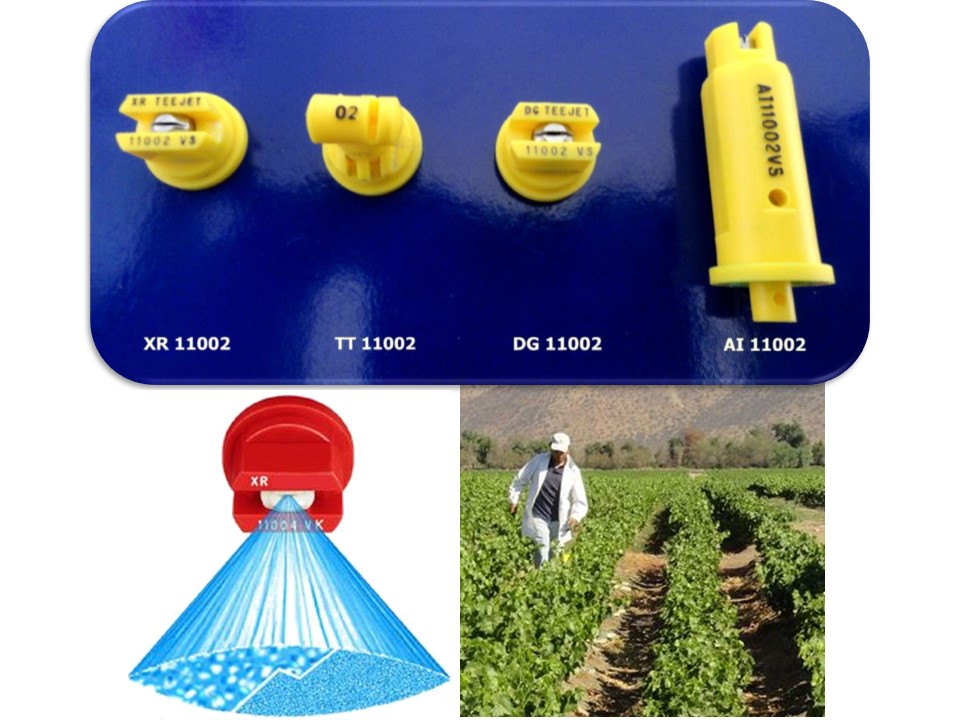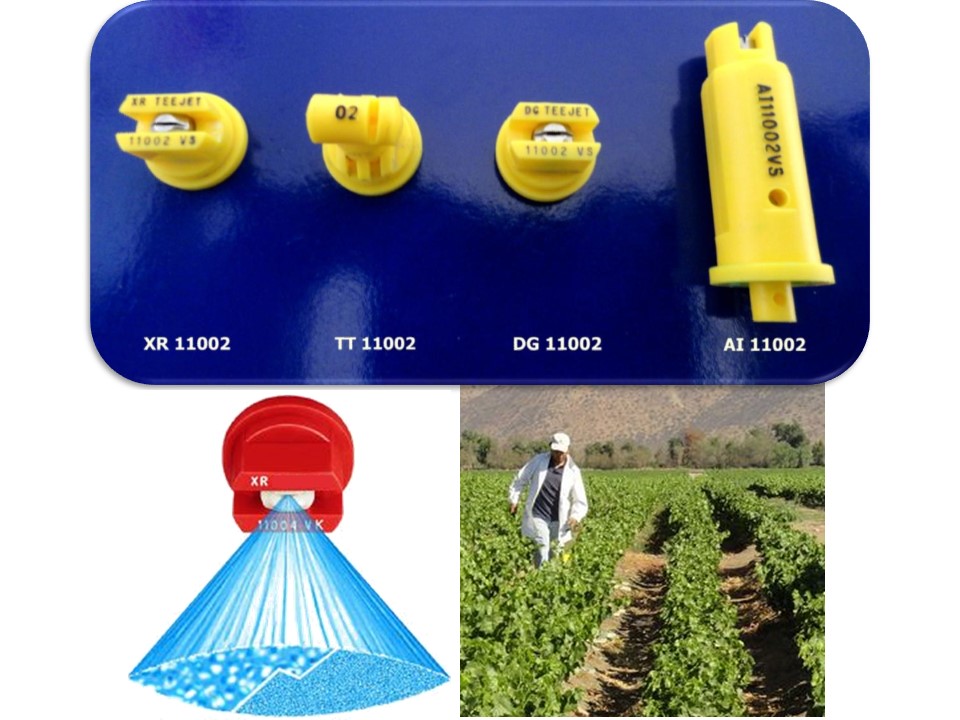Use of anti drift nozzles in control of perennial weeds in vineyard nurseries
Palabras clave:
Fitotoxicidad, depósitos de aspersión, glifosato, efecto deriva, control de malezas, control químicoResumen

Table grapes are the most widespread fruit species in Chile, requiring a large amount of agrochemical products. Due to this large requirement, agrochemicals such as herbicides need to be applied precisely and in an environmentally safe manner in order to achieve the desired target. Weeds are a limiting factor in vine nurseries, where Cyperus rotundus, Sorghum halepense, and Cynodon dactylon are the hardest species to control. In this case, application though nozzles is of vital importance for a correct herbicide distribution and dosage over the target. However, the use of herbicides in vine nurseries has not been widely practiced and literature on the subject is very scarce. In this project, a comparative study between conventional extended range flat spray (XR) and drift effect nozzles (TT turbo teejet; DG drift guard; AI air injection) was conducted. Weed control with glyphosate and phytotoxicity in Vitis vinifera cv. Thompson Seedless self-rooted nursery plants were evaluated, under wind drift conditions of 5.8 km h-1. This wind drift and the low angle of elevation of the nozzle (35 cm) caused the herbicide to reach the vine, generating the same visual plant toxicity damage regardless of the nozzle type used, with an increasing damage from day 7 to 28 after application (DAA). A gradual decrease was observed from 36 DAA onwards. Although no differences between the nozzles with respect to drift damage were detected, the use of the DG nozzle resulted in a lower percentage of sprouting weeds. This may be due to the DG nozzle having significantly reduced drift compared to conventional or standard nozzles, and, in turn, generating smaller droplets than AI, favoring their retention on the leaves.
Highlights
- At wind drift conditions of 5.8 km h-1 and a lowering elevation of the nozzle (35 cm), generating the same visual plant toxicity damage regardless of the nozzle type used.
- DG nozzle having significantly reduced drift compared to conventional or standard nozzles, and, in turn, generating smaller droplets than AI, favoring their retention on the leaves.
- Regrowth of C. dactylon, the nozzles with bigger drops (DG y AI) achieved better coverage and thus obtained a better control of this weed. While for S. halepense y C. rotundus, the nozzles with median sized drops (DG y TT) achieved minor regrowth, as they were not too small for bad coverage and not too big to drip through vertical leaves.
Descargas

Descargas
Publicado
Cómo citar
Número
Sección
Licencia
Aquellos autores/as que tengan publicaciones con esta revista, aceptan las Políticas Editoriales.










.jpg)




